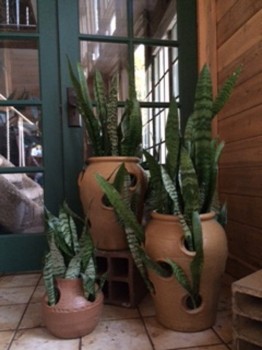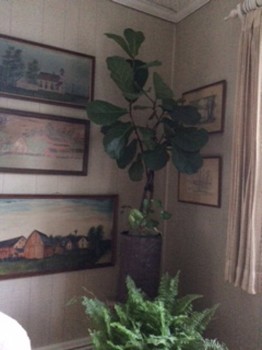In The Garden — Choosing Plants To Winter Over
By JOYCE ARLEEN CORSON
Master Gardener
 SYRACUSE — The relationship we have with plants is based on our dependency for the rewards they provide to us by way of fruits, vegetables and the food they provide for animals. Our emotions play a role as the garden provides therapy, visual pleasure, and accomplishments of success.
SYRACUSE — The relationship we have with plants is based on our dependency for the rewards they provide to us by way of fruits, vegetables and the food they provide for animals. Our emotions play a role as the garden provides therapy, visual pleasure, and accomplishments of success.
Our growing season ends Sept. 15, when frost is evident and days grow long. Over the fall and winter months is the time we loose with plants unless we bring them inside our home or a green house designed to keep plants warm.
If you choose to bring plants inside your home, do so when the temperature of your home matches the outside temperature. Some plants may loose leaves if they suffer the lower temperatures that dip into overnight 60 degrees or lower. For some plants like the Christmas cactus the cooler weather actually helps their blossom develop. Tropical plants adapt well to the home temperatures. The shortened day gives less sunlight but the trees without leaves will actually let more sunlight come into your home, but that doesn’t change the length of actual time of sun light That is where you can use artificial lights in table lamps to compensate. Here are some helpful hints I have found when placing tropical plants inside the home.
Plants with thick leaves such as mother-in-law-tongue, (sanseviera), aspidistra, fiddle leaf fig (ficus lyrata) norfolk island pine and sago palm (c. revoluta) can do well in a dark corner or a north window. Coleus, and begonias need more light and like an east window. Southern windows are favored by the variegated plants such as spider plant (chlorophyum), and dracaenas, the popular spike for summer containers. The west window is the hottest in the winter. Save that window for herbs and soft stemmed plants like basil, parsley, and petunias. Oregano and rosemary, the more woody of the herbs will need more water. Ferns can survive almost anywhere.
Containers can be anything that will hold water, but still have the ability to drain. Protect your floors and furniture with saucers that are totally waterproof to catch the excess water. Tera cota clay pots will seep water and sweat even if there are no drain holes. It is essential to see that your potted plants drip water out the drain holes when you water them. It is necessary to know that the water got to the bottom of the pot. Plant roots follow the water and that is how you know all parts of the plant received necessary moisture. If the soil at the top feels dry and flaky the plant needs water. Water all areas of the surface giving the pot a quarter of a twist to keep the plant growing evenly.
Large containers are not really necessary to enjoy the beauty of plants. If you have small spaces consider Bonsai. Your choices will reflect your personality, home style and environment for the successful growing of house plants.
Corson is a graduate of Adams Central High School, Manchester University and Ball State University. She and her husband, Ron, were married and enjoyed many years of traveling before they settled at Lake Papakeechie to raise their family. Soon after moving to the Syracuse area, Corson joined the Syracuse/Wawasee Garden Club and then became a Kosciusko County Master Gardener in 2002, the same year she retired from teaching.
“Early on my interest in gardening came from a lineage of farmers and their wives, including three generations of generosity, giving me an enormous collection of heritage trees, shrubs and flowers. History and traveling has given me special interest in native flowers, hosta, the art of bonsai and many plants that have been naturalized.”
Individuals who wish to contact Corson for further information or questions may email her at [email protected].
- Variegated Benjimin fiscus and desert rose, both bonsai grown
- Boston Fern in the background, fan tail fern in the foregroundt any where
- Begonia and a fan tail fern





